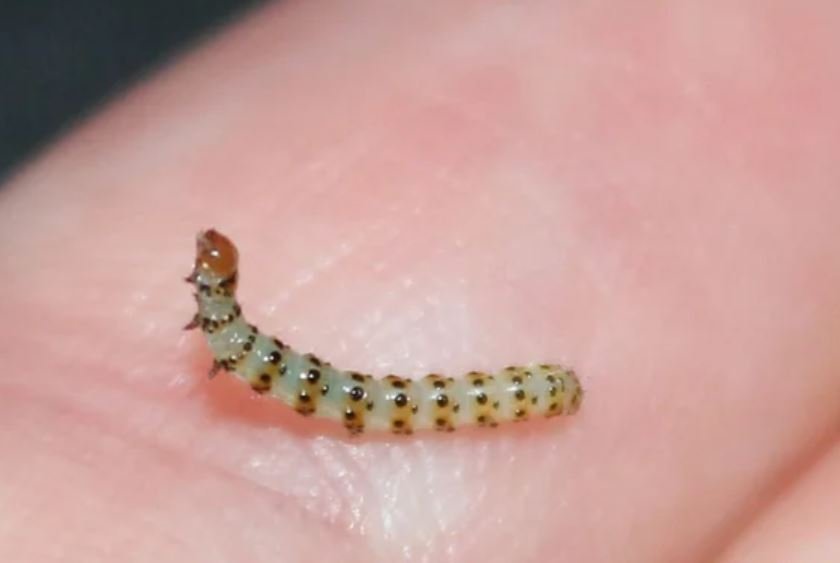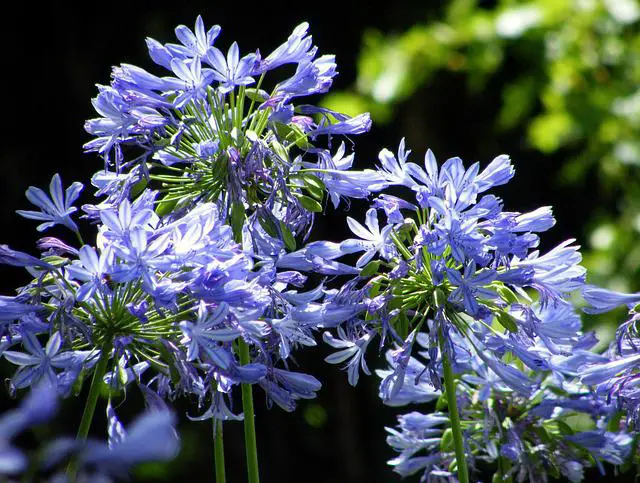Agapanthus is a beautiful plant, known for its green long foliage and distinct flowers. Originating from South Africa, these flowers can be grown anywhere so long as the climate is appropriate.
These wondrous plants flower in the summer months in colors ranging from blue to white. While generally hardy and pest free, they are not totally infallible.
Pests that can eat agapanthus are aphids, mealybugs, red spider mites, snails, slugs, Agapanthus borer, deer, and fungus.
Let us give you the details on each of the pests that can eat your Agapanthus.
#1- Aphids
At the first signs of something eating your agapanthus, the first thought that comes to mind is aphids! These small insects can create major damage because of the sheer numbers by which they infest plants.
From a distance, aphids aren’t really visible until you take a closer look. You will notice these small insects that distinguish themselves from spiders with their multiple limbs.
Aphids don’t really eat the plant as you imagine. They use their mouthparts to puncture and suck sap from agapanthus leaves. With time, aphids can completely deplete your plant to the point that it cannot survive as translocation comes to a halt.
#2- Snails and Slugs
These invertebrates are active at night. They slide all over the plant, devouring the leaves as it moves along. During the day they hide under the plant’s leaves or overlying mulch.
A few could be taken care of, by using a torch at night to shine over the plant and pick them off.
Another option is to put out a shallow saucer level with the ground containing beer! Yes, you heard right! The beer attracts the snails and slugs, they slide into it, drink it and eventually drown.
Alternatively, scattering crushed eggshells or diatomaceous earth around the plant will discourage the snails and slugs. It cuts up their soft and vulnerable bodies. Copper wire laid around agapanthus gives the animals a mild electric shock.
#3- Mealybugs and Red Spider Mites
These tiny little bugs will love your agapanthus a lot! So much that are the most prevalent pests that attack agapanthus plants.
Appearing as clumps of fluffy white (mealybugs) or red spider-like creatures, you will have to take a closer look to identify these pests.
They suck the sap of the plant and if the infestation is large they can and will kill your agapanthus if not treated quickly. The plant is best treated with insecticidal soap.
Make a solution and spray on the leaves as well as under the leaves, apply weekly until the plant is free of the bugs.
NOTE- It is always better to avoid these infestations rather than curing them, frequent checks will help.
Want to know how poisonous Agapanthus are?
#4- The Agapanthus Borer (Neuranethes spodopterodes)

This pest is actually a moth’s larval form that feeds exclusively on the Agapanthus genus and its hybrids. The Agapanthus borer has an orange head, a shiny body, and small black dots on its body making it appear stripped.
They are plentiful in the warmest times of the year. After mating, the female moth lays her eggs on the flower or leaves of the plant. Once the eggs hatch into caterpillars they bore their way through the crown of the agapanthus plant.
They proceed all the way down to the rhizomes. Sadly this migration may end in severe damage as they feed on plant matter all the way to the rhizomes.
If not caught in time, they will multiply and possibly cause the end of your agapanthus plant.
Note- These pests are most prevalent in South Africa, chances of it affecting agapanthus growers in the USA are low but not none!
#5- Agapanthus Gall Midge
This is a relatively new pest exclusively affecting agapanthus flowerheads. It belongs to the family of flies.
The tiny female Gall Midge lays its eggs in the developing flower heads, which then hatch out into maggots. These larvae enter and feed on the individual flowers.
They cause deformities and discoloration of the developing agapanthus flowers. They can also cause flower heads to dry up or not open at all!
Upon examination of the Agapanthus flowers, you might be able to see the cream-colored larvae inside. However, note that they are almost translucent and measure anywhere between 2 and 5 mm.
Controlling the agapanthus gall midge revolves around checking on your agapanthus flower heads from development to opening. You can observe for eggs but it is unlikely you’ll catch these minute eggs.
Instead, keep a lookout for flower buds that are changing color or desiccating before opening. These infected agapanthus flower heads must be removed and disposed of immediately.
Also prior to planting agapanthus plants, plowing the soil can help to dry out the soil and kill pests as well as weeds.
Did you know Lily of the Nile (Agapanthus) can be a weed as well? If it’s already happening to you, here’s how to get rid of Lily of the Nile (Agapanthus).
#6- Deer
When people realize something is eating their agapanthus plant they rarely expect it to be a four-legged animal! Unfortunately, this is a reality that people struggle to accept. Insects are not the only pest of agapanthus plants.
Deer don’t just eat agapanthus plants, they enjoy it! If your agapanthus plants have vanished into thin air in a short time, deer are to blame. These animals are common garden pests in areas where they roam free.
If you live in an area where wild deer are a common nuisance, protecting your plants is essential. But, that doesn’t mean you can keep them away.
#7- Fungal Diseases
Noticing a startling discoloration in your agapanthus that is leading to diminished health? There is something that is taking an odd route to eat agapanthus plants. It could be a fungus!
Agapanthus plants are no stranger to fungal diseases. There are quite a few fungal diseases that might end up eating your plants. Examples are:
- Botrytis root rot,
- Gray mold,
- Leaf spot,
- Powdery mildew
Most of these diseases are denoted by a color change on leaves and growth that appears raised or feather-like. Just picture the growth of mold on bread to get a better idea of what to look for.
Leaving a fungal disease untreated can and will cost you your agapanthus plant. Treatment or disposal of infected plants will be most effective in handling fungus that eats agapanthus plants.
How to Know if Something is Eating Your Agapanthus?
Before starting to tackle whatever is eating your agapanthus, you must know that your plants are being eaten!
Yellow leaves with parts missing (holes) on the leaves, flowers, or stalks are sure signs something is eating my agapanthus. Symptoms may vary depending on location since pests vary from location to location.
There are a number of culprits that could be feasting on your agapanthus. Although some would be visible to the naked eye, some are neither visible nor common.
Other symptoms could include a lack of agapanthus flowering, webs on leaves, and leaf cuts.
How to Protect Agapanthus From Pests?
Pests and diseases that effectively eat agapanthus plants can be laying in wait in anyone’s garden. Prevention is good but let’s face it, sometimes if it’s going to happen it will happen!
Tips to keep pests from eating Agapanthus plants:
- Dispose of infected foliage properly, i.e drying or burning.
- Check your plants diligently, especially at night when certain pests are in their element.
- Use insecticides but preferably use natural products to avoid pollution or harming beneficial organisms.
- Repot and transfer agapanthus plants if they have been treated for a pest infestation recently.
- If you live in a deer-prone area, fencing off your agapanthus may be a good idea. You can even choose to plant them in pots and bring them indoors.
- Avoid creating humid and wet environments which favor fungal growth. You can do this by making sure your agapanthus have enough sunlight and airflow. Shake the plants to remove excess water after watering or rainfall.
Conclusion
The rule ‘prevention is better than cure is certainly applicable here. An examination to check the health of your Agapanthus every now and then will prevent an outbreak of pests.
It will also be easier to contain a mild infection compared to an infestation. One must remember that your other garden plants will also be at risk, as some pests are not choosy as to which plant they eat!
If you want to know “Pests That Can Eat Agapanthus”, the answers are:
- Aphids
- Mealybugs
- Red Spider Mites
- Snails and Slugs
- Agapanthus Borer
- Deer
- Fungus
Read this to find out why Agapanthus leaves curl.
FAQs
No, rabbits do not eat agapanthus as it is poisonous to them. This is good news as there is one less pest to worry about!
Pests will eat agapanthus plants for as long as they can. So long as they are getting what they want, they won’t leave.
Eventually, when they exploit everything and the plants are in poor health and dying, they will move on. However, it will be too late to save your plants!


